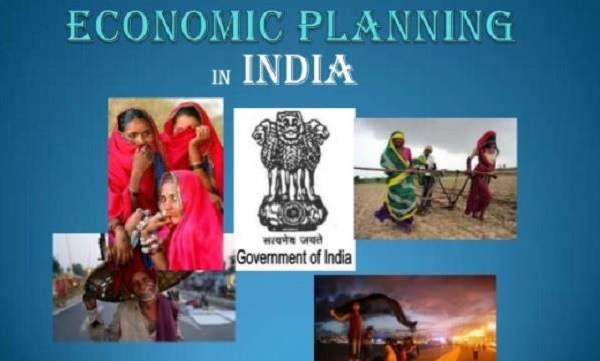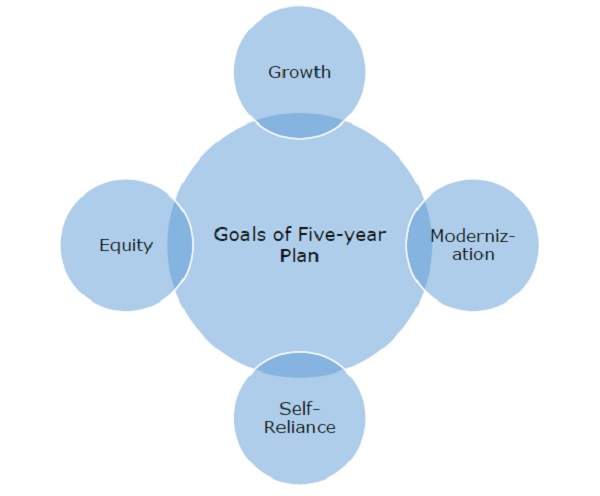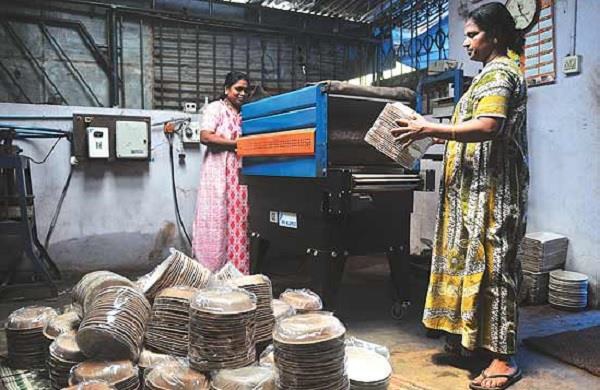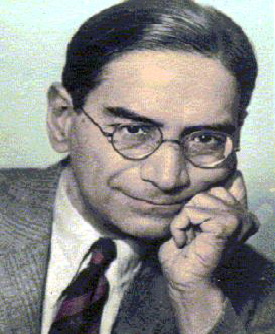Introduction
- After independence, one of the most difficult choices that the leaders had to make was to decide the type of economic system that was capable enough to promote welfare equally across the country.
- Among different types of economic system, Pandit Jawaharlal Nehru, the first Prime Minister of India, suggested
Socialist Economy;
however, it was not the same that was practiced in the USSR. - After great efforts, the planning committee decided to adopt a mixed economic system − a judicious mix of both socialist and capitalist systems.
- Mixed economy was finally chosen with the help of Industrial Policy Resolution of 1948 and Directive Principle of Indian Constitution.
- Planning Commission was set up in 1950, and the Prime Minister of India was made the chairperson of the commission.
Five-year Plans
- The First Five-Year Plan was one of the most important as it paved for the development of the country then and for the years to come.

- Five-Year Plans are formulated very systematically in which all the problems are considered and addressed on priority basis. For example, agriculture development wasthe most important after independence, hence, the first five-year plan was drafted to strategically propel its growth and development.
Goals of Five-year Plan
Any plan should have a specific goal to fulfil. The goals of the Five-Year Plans are mentioned in the following image −

Growth
- This goal was directed towards an increase in Gross Domestic Product (GDP) of the country. The different sectors of the economy — the agricultural sector, the service sector, and the industrial sector are considered when a country’s GDP is derived.
Modernization
- For the swift growth and also to increase the productivity, modernization was necessary; hence, new agricultural technology (use of machinery and hybrid seed varieties) as well as advanced machinery for factories were used.
- Apart from the modern technology, social status of women was also considered and they were granted equal rights.
Self-Reliance
- To develop all the sectors and make India a self-reliant country, only indigenous resources and technology were promoted during the first seven five-year plans.
- Another purpose of self-reliance was − India did not want to depend on any other country for food and important technologies, as it could be a threat to country’s sovereignty as well.
Equity
The above mentioned goals would not be fruitful or lead to the betterment of the people unless there is equality.
To ensure equity, the following steps have been taken −
- Implementation of the Land Reforms Act was a turning point under which, the government abolished the existing ‘Zamindari’ system and the tillers (farmers) were made the owners of the respective land.
- Land Ceiling was another commendable act under which the maximum size of land plots an individual can own was fixed.
- The purpose of land ceiling was to prevent the concentration of land ownership in the hands of few people.
- There were some loopholes in the land ceiling law and the implementation methods were also poor; therefore, the land ceiling was not as successful as it should have been. Only Kerala and West Bengal adopted this policy with full commitment.
- The Green Revolution marked a significant change in the field of agriculture in India. It promoted the use of High Yielding Variety (HYV) seeds. This further increased the yield of wheat and rice.
- Primarily, the use of HYV seeds was limited to a few states — Punjab, Andhra Pradesh, and Tamil Nadu, but after the late 1970s, many other states also started benefitting from the use of HYV seeds and improved the agricultural production on their fields.
- Use of HYV seeds benefited farmers in the form of market surplus, i.e., farmers were now producing sufficient grains that could also be sold into the market.

- For the equal distribution and fair opportunity among rich and poor farmers, the government made a policy to provide agricultural loans to farmers at subsidized rates.
- Debate on Subsidy − Many economists accepted that the subsidies are good for the grass root level development, but there were a few who questioned it. However, unquestionably, subsidies brought change in India and proved beneficial for the farmers.
- A major drawback is that about 65 percent of the population is still occupied in the agriculture sector and is not finding employment in any other sector.
- Because of several problems and issues including poor infrastructure, lack of proper policy, lack of skilled human resources, the industrial sector could not undergo development until independence. Over a period of time, formulation of several industrial policies and the development of infrastructure merged in to mark the progress of the industrial sector in India.
- The focus of the second five-year was industrial growth. All major industries, that drove the progress of the Indian economy were in the public sector and the government’s control over these increased during this period.
Industrial Policy
Industrial Policy Resolution is a resolution adopted by the Indian Parliament in 1956. It was formulated under the Second Five-Year Plan.
- This resolution categorized industries into three sectors −
- State owned industry;
- Mixed i.e. state and private individual running industry together; and
- Private sector.
- According to the industrial policy, the private sector (industry) was also kept under the state control. To open a new industry or to expand an existing one, the first prerequisite was to obtain a license from the government. Small Scale Industry.
- In 1955, Village and Small-Scale Industries Committee (which is also known as Karve Committee) proposed to promote small-scale industries for rural development.
- To set up a small-scale industry in those days, maximum investment one could make was Rs.5 Lakh. The limit has gone up to Rs.1 Crore now.

Trade Policy
- As self-reliance was the primary objective, trade policy was not in favour of import of foreign goods.
- Import taxes of various goods were very high. This thereby, increased the cost of the goods in the target market.
- In addition to the above discussed conditions, quotas were also imposed and these quotas had an effect on the supply of these imported goods.
- This system was practiced only to protect domestic firms from the foreign competition.
- Thanks to these policies, results were also positive; GDP increased from 11.8 percent (1950-51) to 24.6 percent (1990-91) and the industrial growth rate was a remarkable 6 percent.
- After the implementation of the Trade Policy, industries were no more limited to just jute and textile, rather, they expanded their operations and new units were started.
- In spite of a significant growth, many economists criticized the economic policy, as it was largely controlled by the government. For example, in the telecommunication sector, people used to submit their applications months before they could actually get the connection.
- There was a huge debate on public vs private sector. Many believe, emphasis on public sector restrained the potential economic growth of India.
- On the other hand, the regulation of private sector through licensing system (which people call permit license raj) curtailed the industrial growth potential of the country.
- High import tax and restriction on foreign trade also drew criticism.
- With the introduction of the new liberal economic policy of 1991, Indian economy addressed the prevailing economic problems through the following −
- Liberalization
- Privatization
- Globalization
Prasanta Chandra MahalanobisMany of the economists and other scholars contributed to the formation and nurturing of the Indian economic system.

No comments:
Post a Comment